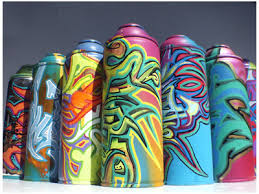
Susan Phillips (1996) explains in The Dictionary of Art that "because it is impossible to limit or regulate the resources that are available, graffiti as an art form and expressive medium is expandable, flexible, and difficult to control.". Regardless if the government considers this a crime or not, they have no way of regulating the consistency of it because of all that is so easily available like spray paints, paint cans, paint brushes, etc. Parents buy these items for their kids school art projects so what makes it any different for a graffiti artist to buy them? Their kids are using the art supplies in the same way as the graffiti artist but are sometimes just in different locations or on different canvases. No one ever called a kids school project a criminal offense, it is just seen as a creative aspect to unleash and express themselves. That is what graffiti is for graffiti artists. As long as they don't use their talent to their advantage and vandalize personal property, society will start acknowledging graffiti in a more positive light.
Ali, S. (2004) Graffiti- art or crime? Retrieved September 23, 2009 from http://www.shamsali.org/taj/2004/graffiti.html
Castleman, C. (1984) Getting up: subway graffiti in New York. Retrieved August 25, 2009 from http://books.google.co.nz/books
Graves, T. (2007) Graffiti is not vandalism. Retrieved September 23, 2009 from http://media.www.deltacollegian.com/media/storage/paper320/news/2007/10/17/Voice/Graffiti.Is.Not.Vandalism-3038468.shtml
Ferrel, J. (1993) Crimes of style: urban graffiti and the politics of criminality. Retrieved August 25, 2009 from http://www.albany.edu/scj/jcjpc/vol3is4/style.html
Phillips, S. (1996) Graffiti definition: the dictionary of art. Retrieved August 25, 2009 from http://www.graffiti.org/faq/graf.def.html
Pogrebin, M. (2004) About criminals: a view of the offender’s world. Retrieved August 25, 2009 from http://books.google.co.nz/books
Pohland, D. (2007) Neighborhood controversy, graffiti or art? Retrieved August 25, 2009 from http://wcco.com/topstories/graffiti.riverside.Market.2.364051.html
Prudent, J. (2009) Graffiti an expressive controversy. Retrieved August 23, 2009 from http://www.thepenn.org/2.3671/graffiti-an-expressive-controversy-1.432861


